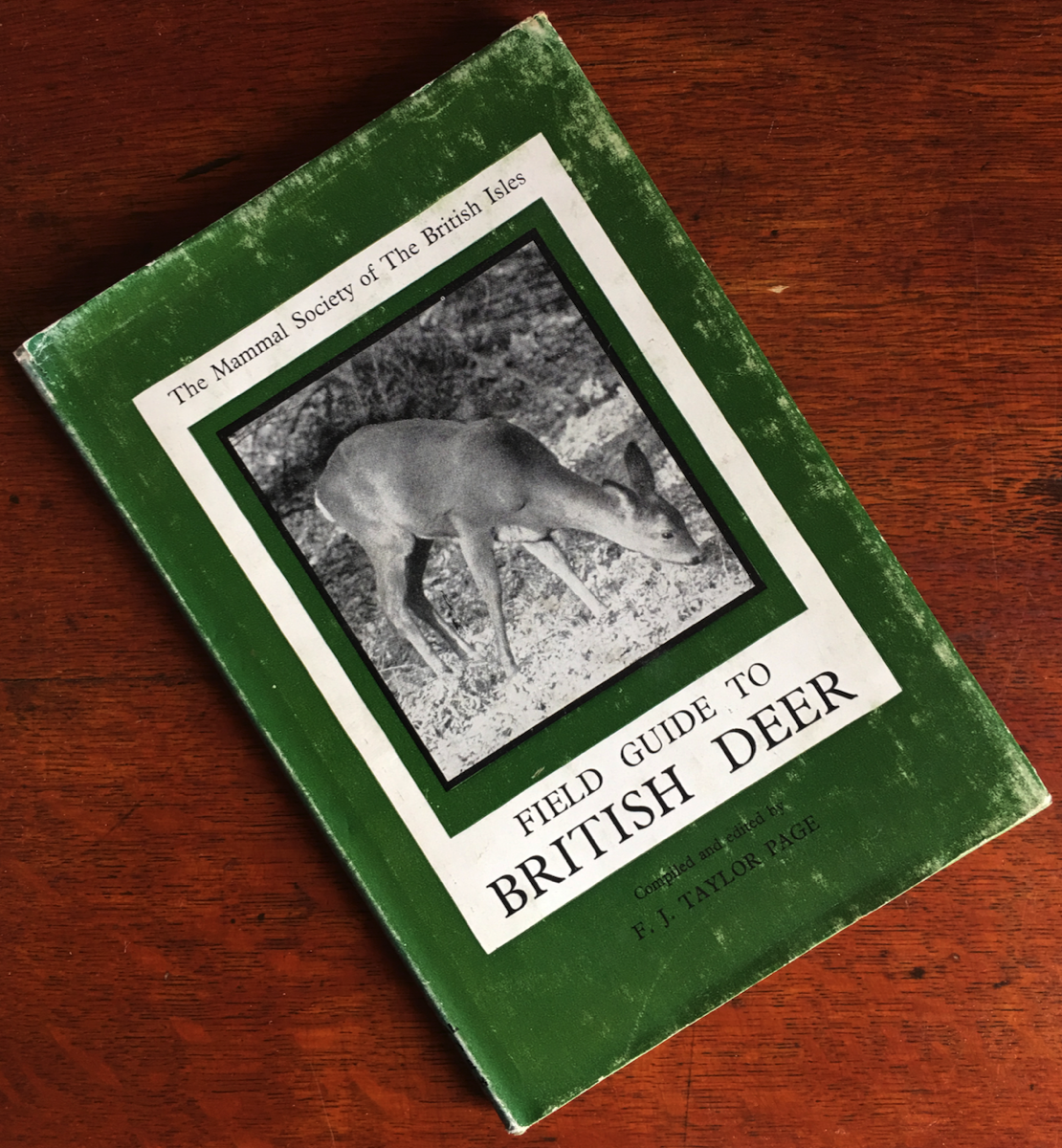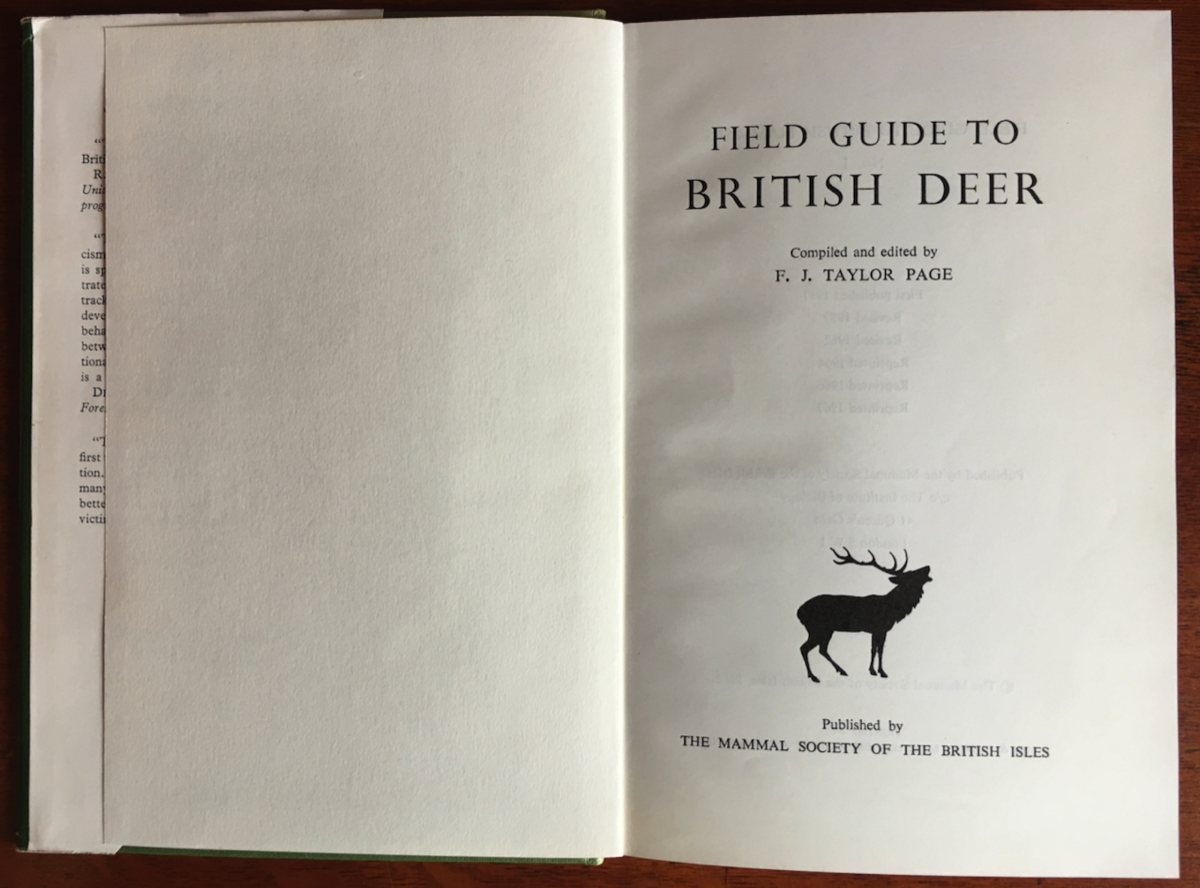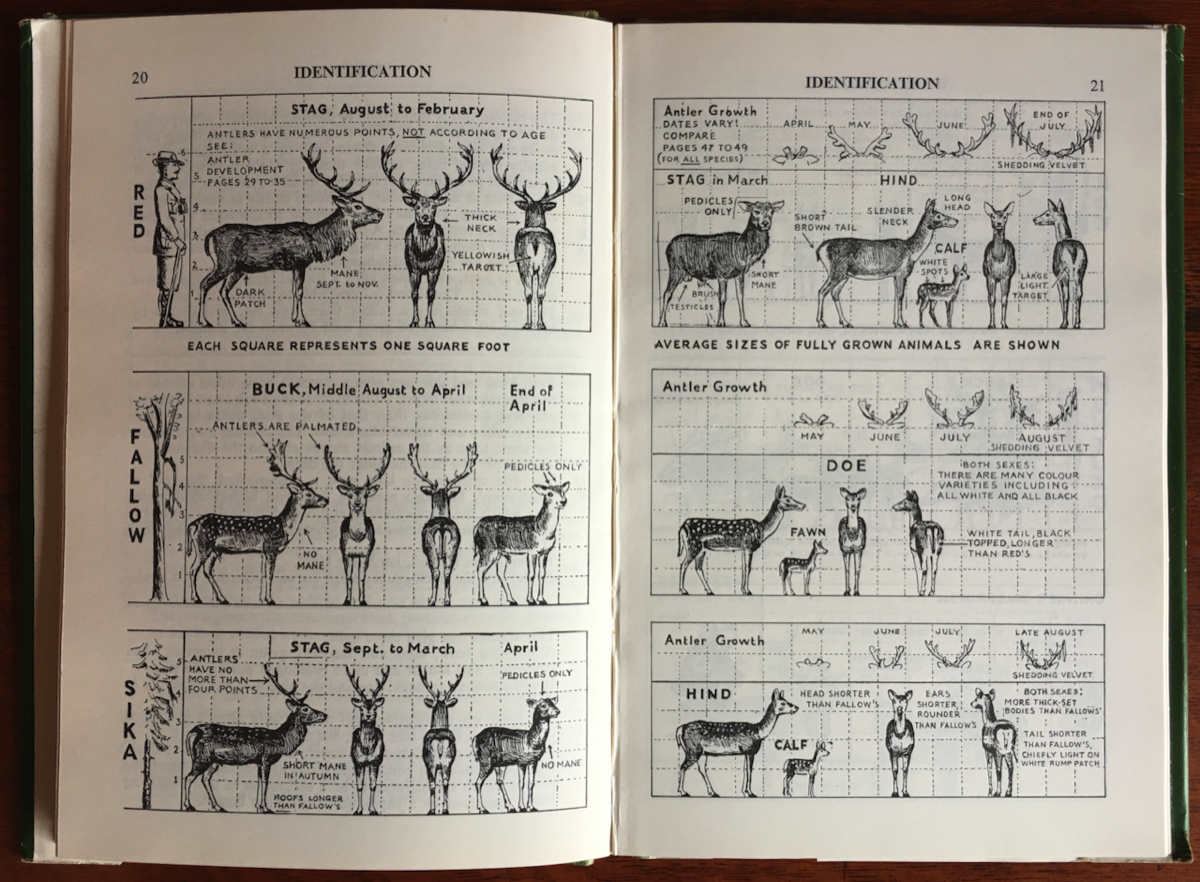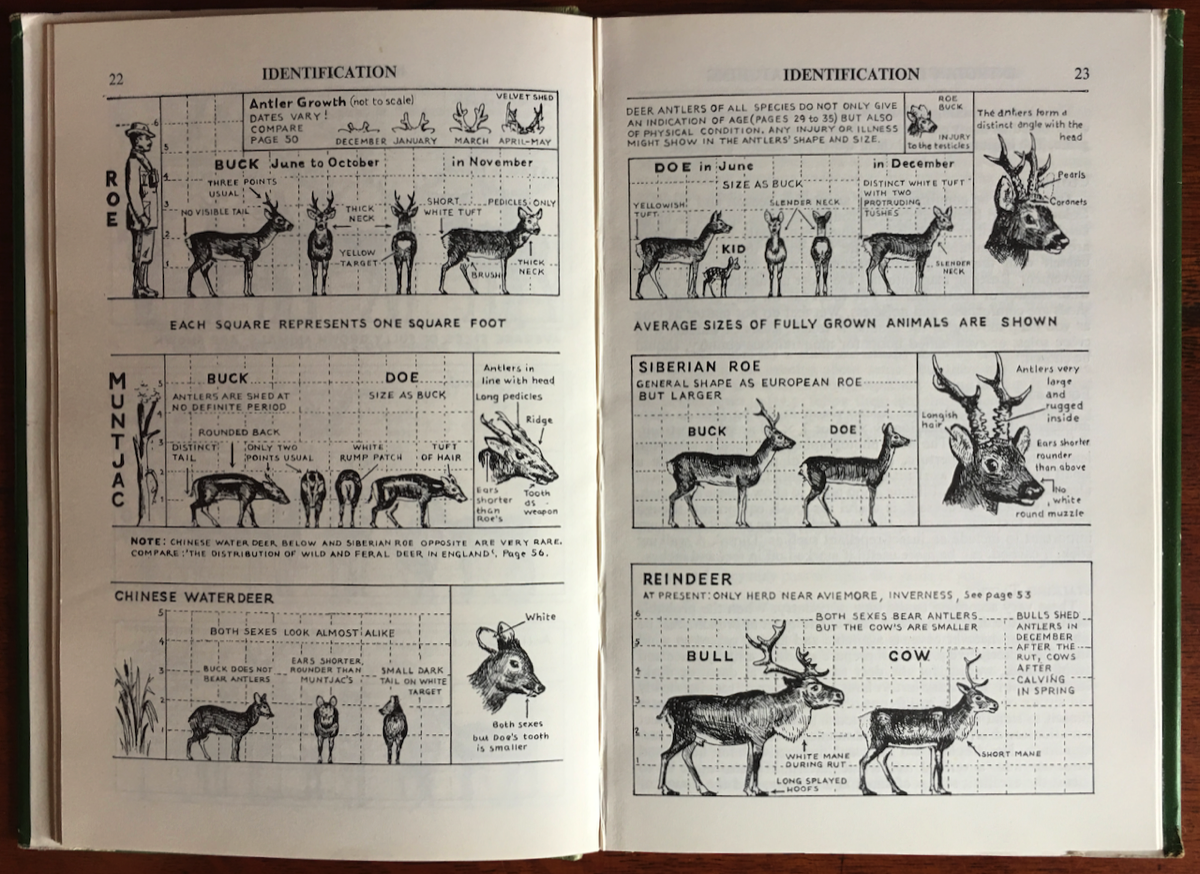Field Guide to British Deer
Compiled and edited by F. J. Taylor Page
The Mammal Society of the British Isles, 1957
“ANTLER DEVELOPMENT AND AGE
Statements about the growth of antlers must be made with the greatest caution. We cannot even say that they are shed and grown annually. Usually this occurs, but exceptions may be found. Their development also depends on such widely differing factors as heredity, soil and weather. To be dogmatic may be misleading…
As a rule, as deer age they are inclined to follow the same kind of development as a human being—youth and sprightliness, middle and ‘spread’, older age with well-developed, rounded hind quarters. Gradually, as the curves disappear, and the joints stiffen, senility becomes apparent.
A stag or buck should not be shot just because it is old; it is very often not only better but also easier to kill a younger male whose appearance is below standard. A stag in his fifth year should have ‘all his rights’, that is, brow, bay and tray lines on both antlers. Many, however, miss a bay, and if it is a choice between a stag with all his ‘rights’ and one with a missing bay, there is no doubt that the latter should be removed.
The focal point in the yearly life of a deer is the rut. For this purpose a male deer grows his antlers. They develop very rapidly. In a red deer, it takes only about three and a half months. The enormous drain on the animal’s strength during this relatively short period of growth is much influenced by climate and food. The antlers are bony outgrowths from the skull. Within the gutters and within the bone itself lie the blood vessels which help to feed the growing structure. When growth has reached its maximum for the year, the blood vessels shrink in size, the velvet shrivels and dies, and it is then frayed off. They are now fixed firmly to the head by what is in effect immovable ball and socket joints. The new growth of antlers starts almost immediately after the old antlers are shed, and in most species this occurs well after the rutting season. If antlers were to be cast at the end of the rut it would probably be beyond the energy of most beasts to survive the double burden of growing them and keeping themselves alive during the bleak winter months.”
Statements about the growth of antlers must be made with the greatest caution. We cannot even say that they are shed and grown annually. Usually this occurs, but exceptions may be found. Their development also depends on such widely differing factors as heredity, soil and weather. To be dogmatic may be misleading…
As a rule, as deer age they are inclined to follow the same kind of development as a human being—youth and sprightliness, middle and ‘spread’, older age with well-developed, rounded hind quarters. Gradually, as the curves disappear, and the joints stiffen, senility becomes apparent.
A stag or buck should not be shot just because it is old; it is very often not only better but also easier to kill a younger male whose appearance is below standard. A stag in his fifth year should have ‘all his rights’, that is, brow, bay and tray lines on both antlers. Many, however, miss a bay, and if it is a choice between a stag with all his ‘rights’ and one with a missing bay, there is no doubt that the latter should be removed.
The focal point in the yearly life of a deer is the rut. For this purpose a male deer grows his antlers. They develop very rapidly. In a red deer, it takes only about three and a half months. The enormous drain on the animal’s strength during this relatively short period of growth is much influenced by climate and food. The antlers are bony outgrowths from the skull. Within the gutters and within the bone itself lie the blood vessels which help to feed the growing structure. When growth has reached its maximum for the year, the blood vessels shrink in size, the velvet shrivels and dies, and it is then frayed off. They are now fixed firmly to the head by what is in effect immovable ball and socket joints. The new growth of antlers starts almost immediately after the old antlers are shed, and in most species this occurs well after the rutting season. If antlers were to be cast at the end of the rut it would probably be beyond the energy of most beasts to survive the double burden of growing them and keeping themselves alive during the bleak winter months.”
© L.A. Davenport 2017-2024.
Cookies are used to improve your experience on this site and to better understand the audience. Find out more here.
British Deer | Pushing the Wave



